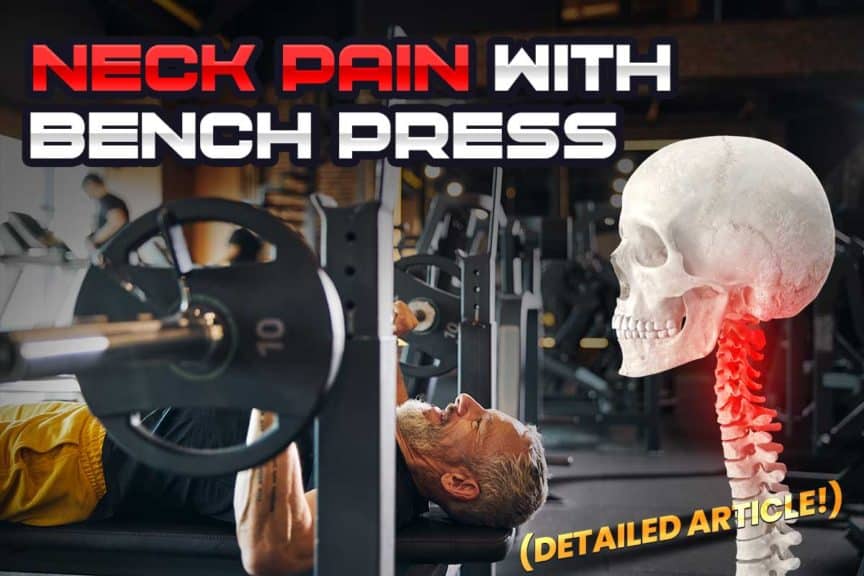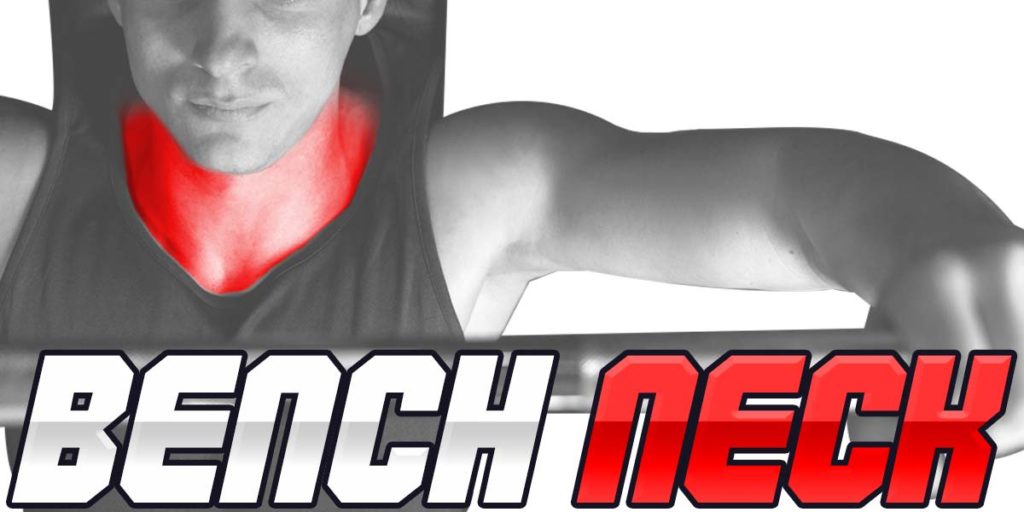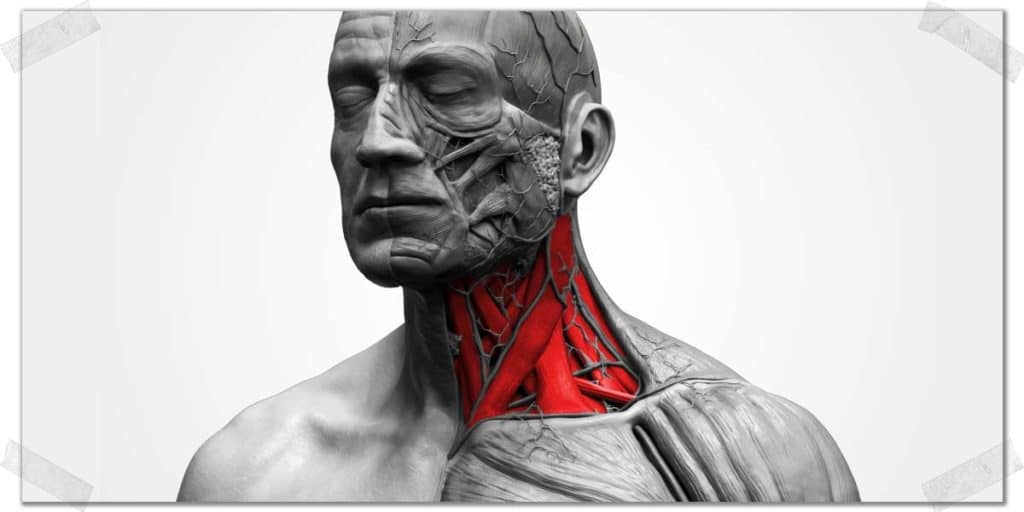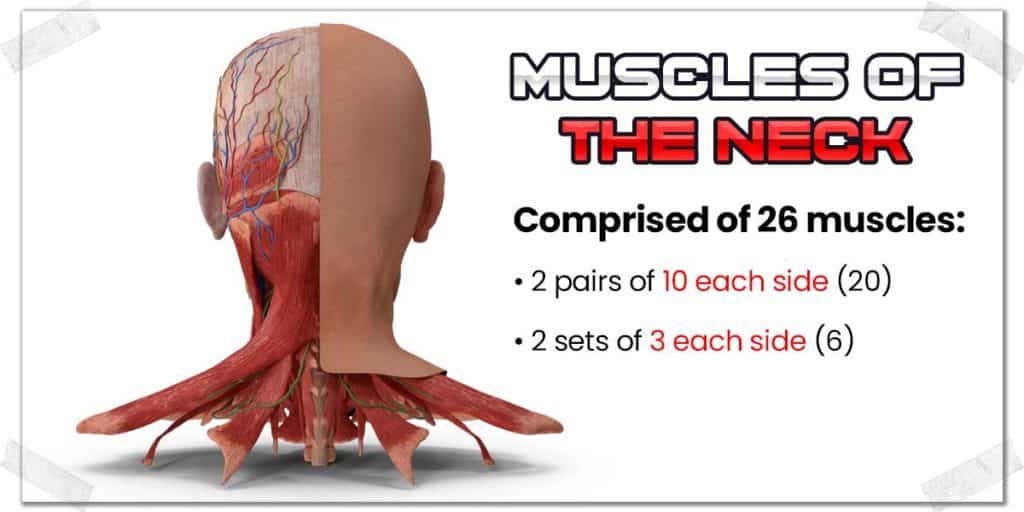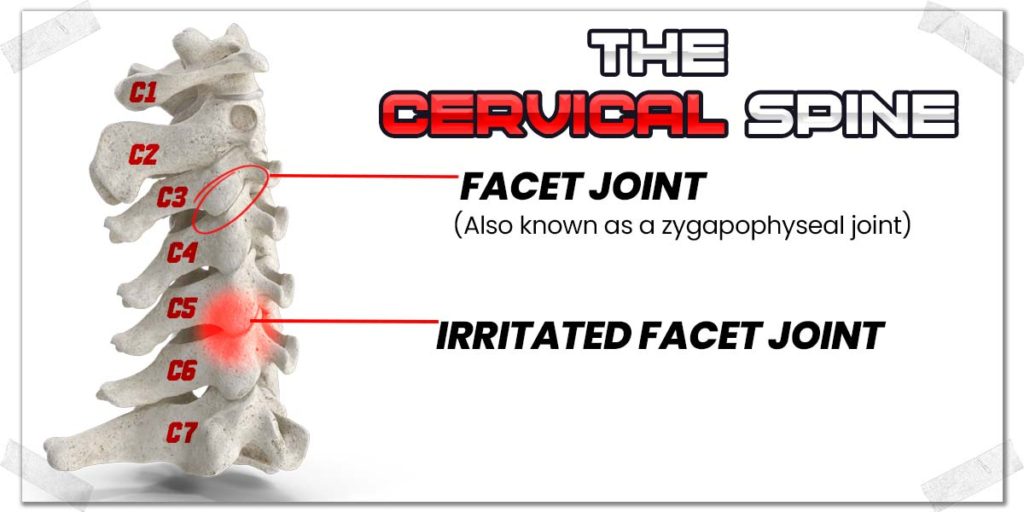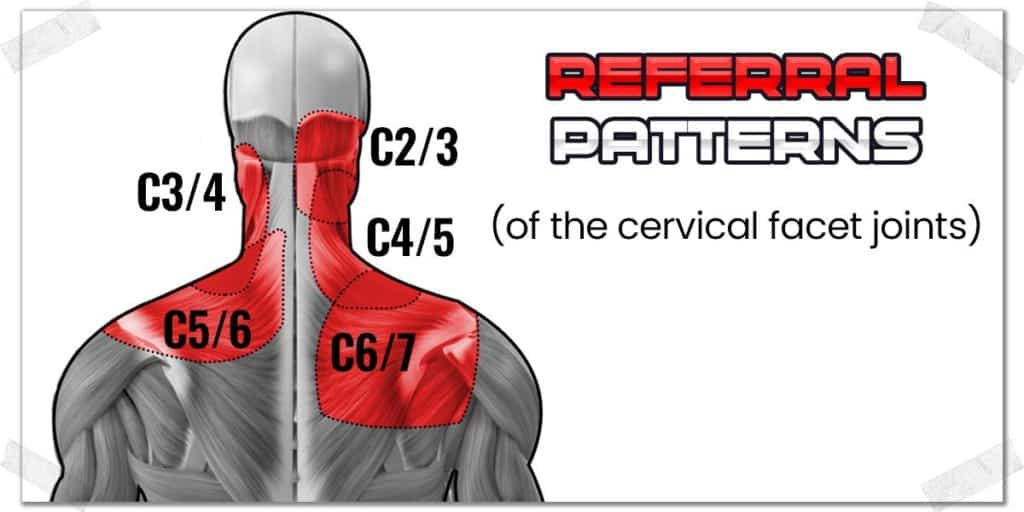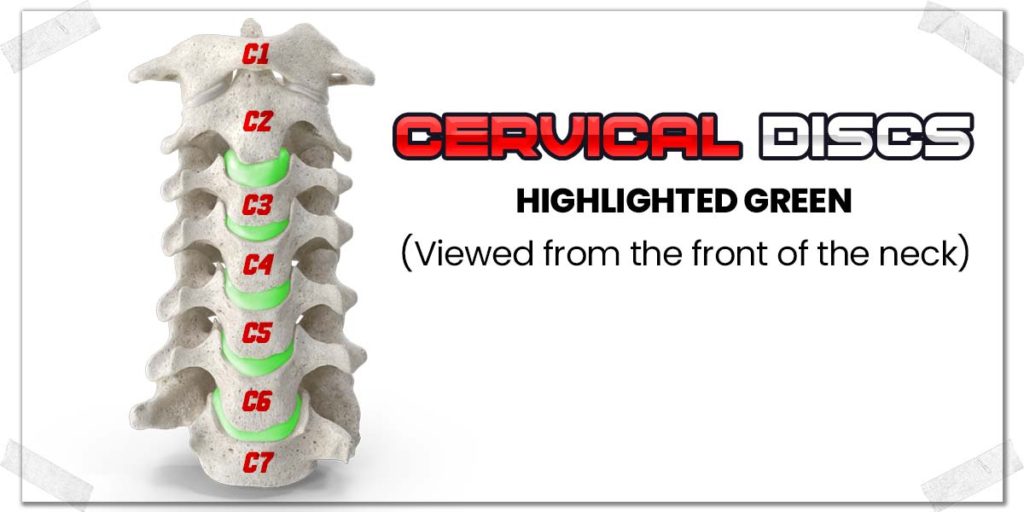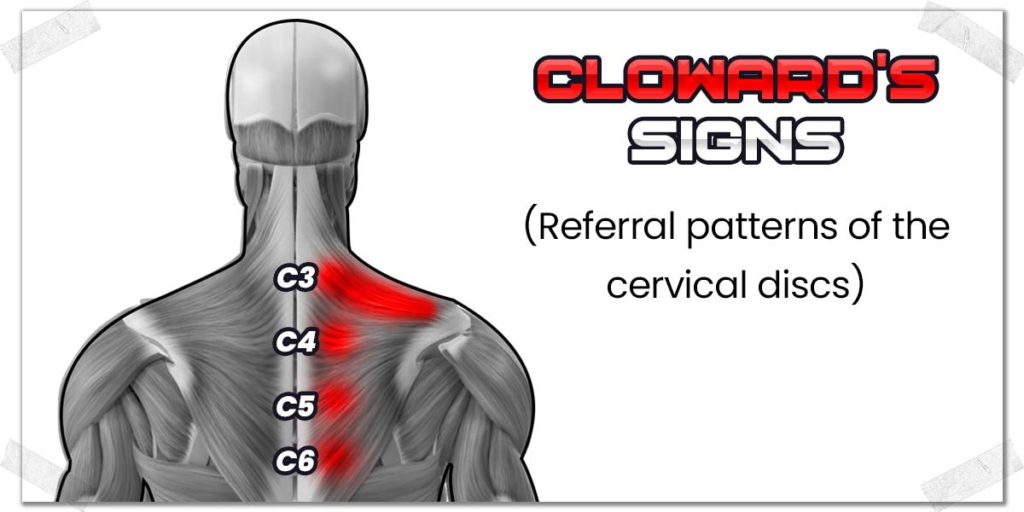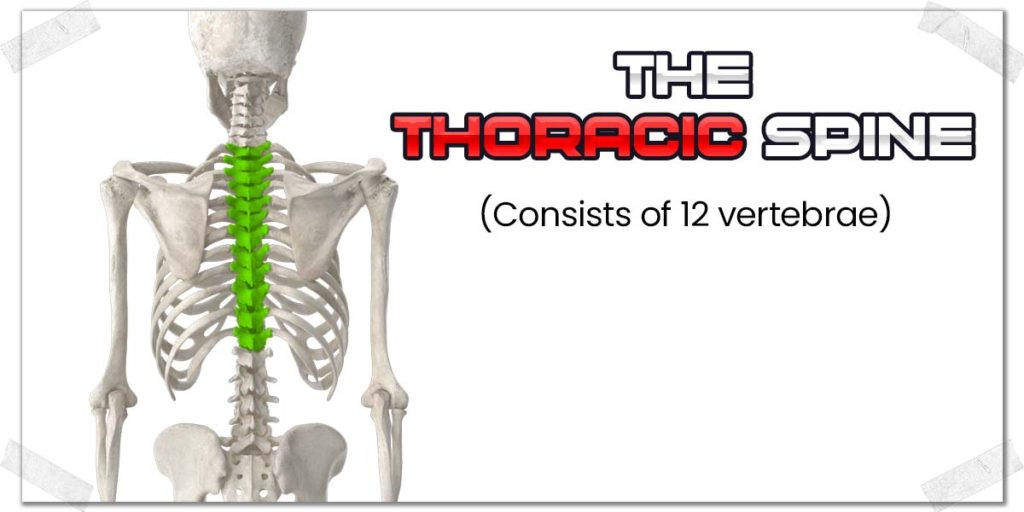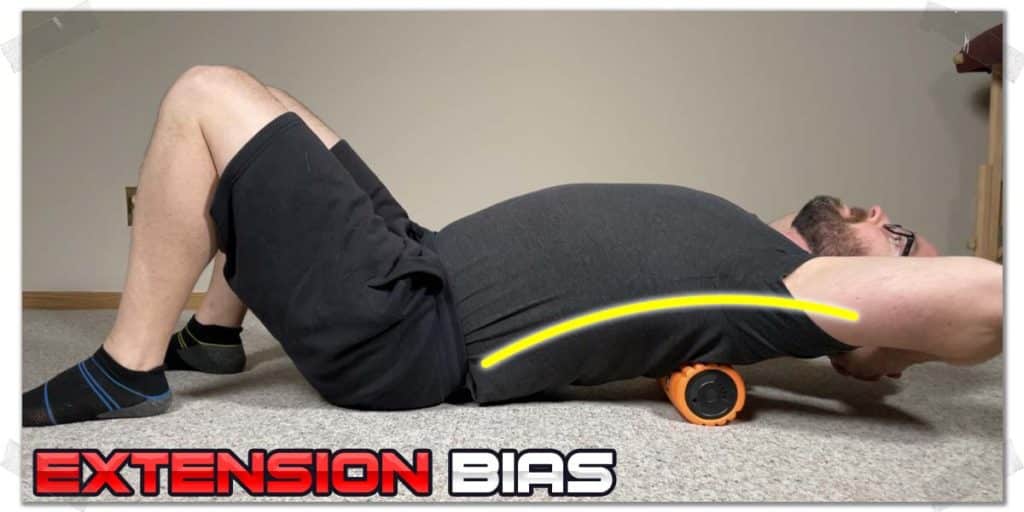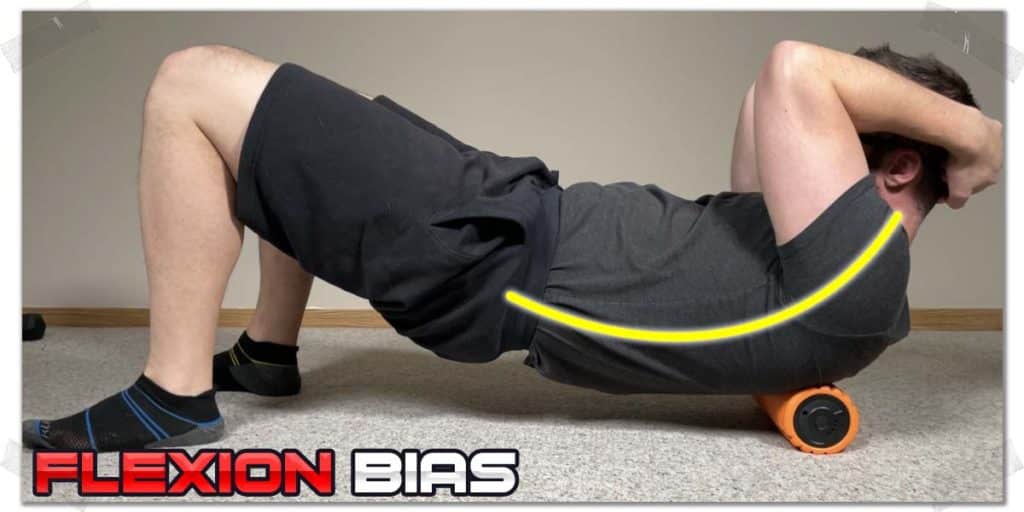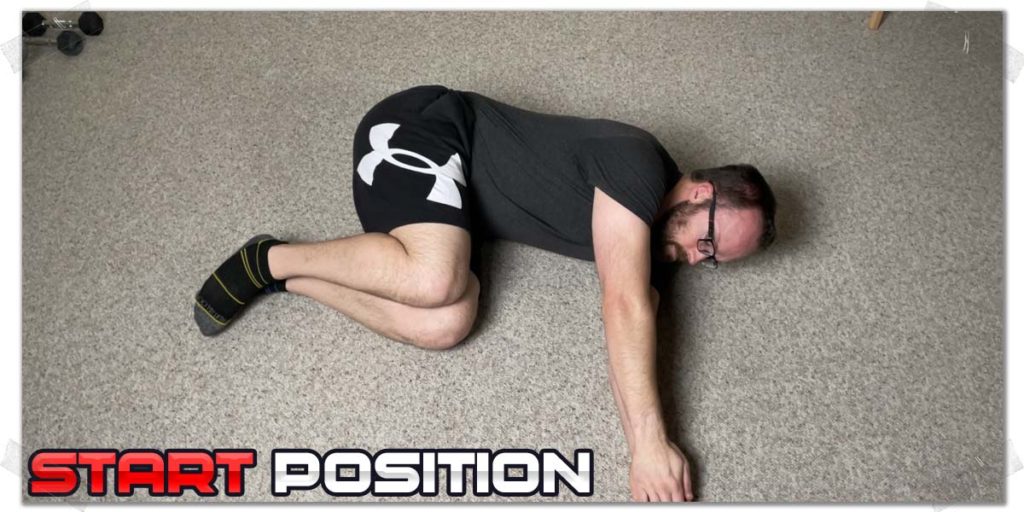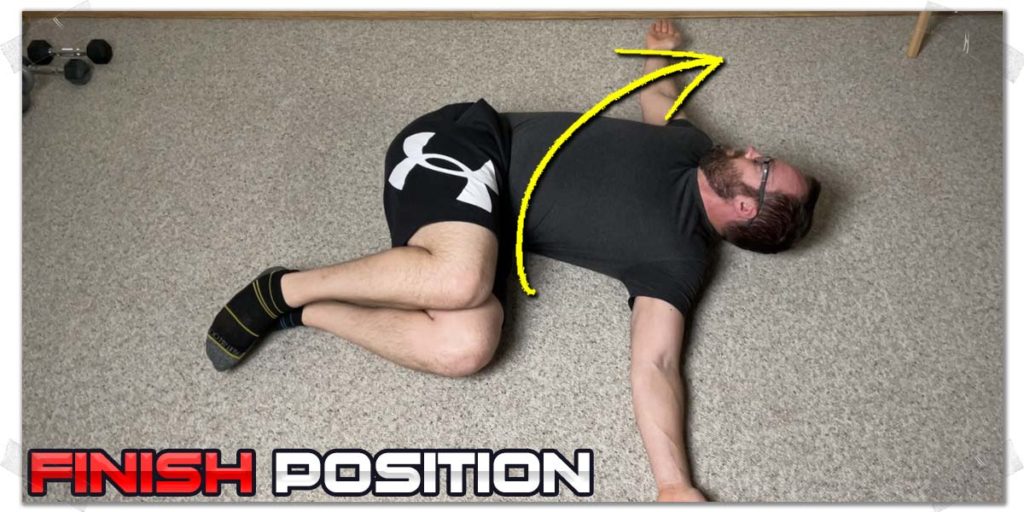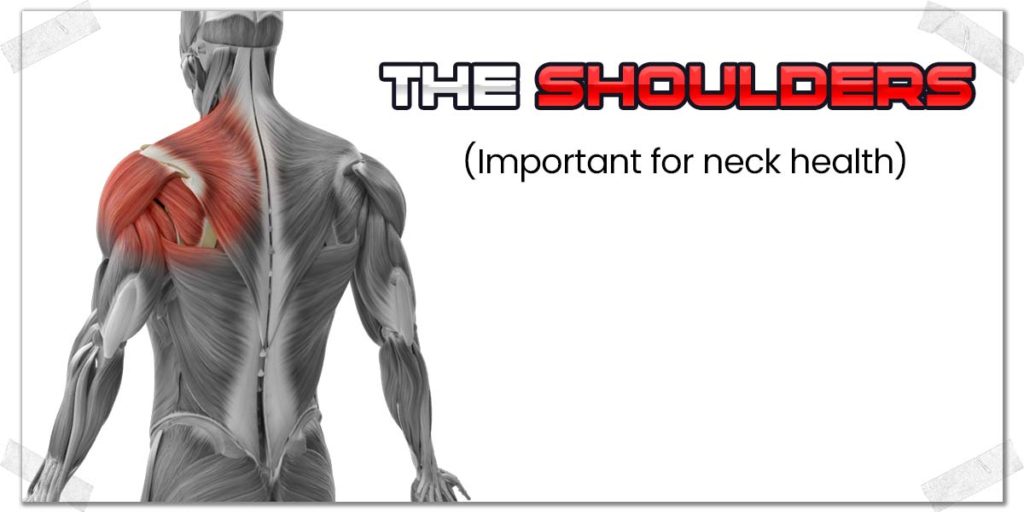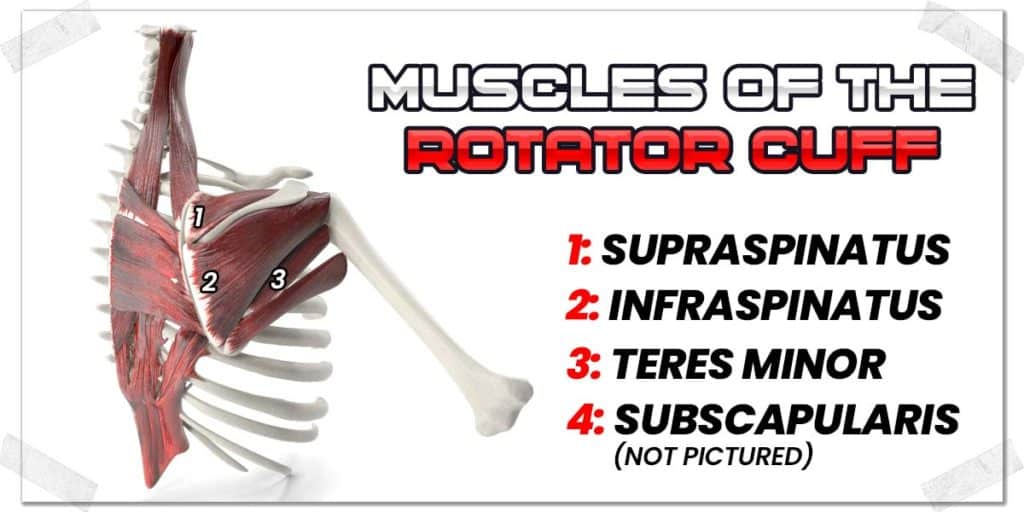Experiencing pain during — or after — bench pressing can be a real pain in the neck, especially when the pain is… in your neck. It might not make a lot of sense as to why an upper body exercise that strengthens your chest and arms gives you neck discomfort, but there are actually a few common reasons as to why this may be.
Neck pain during or after bench press is often the result of excessive muscle tension, facet joint issues, shoulder dysfunction, and poor bench press technique. Solutions involve normalizing muscle tone, improving neck and shoulder mobility, and optimizing your pressing technique.
Of course, there’s more to unpack here, assuming you’re interested in getting to the root of the issue. So, keep reading if you have the desire to better understand the nature of your pain and better understand the steps you should consider taking to resolve the potential issue(s) giving you pain in your neck.
Related article: Neck Pain After Good Mornings: Causes & Solutions (With Photos)
As I dive into the following sections of this article, be aware that I can’t cover everything in one single article; the neck is incredibly complex, and I know nothing of your personal background or current health status. Still, I will present some of the more common issues I’ve seen affect lifters and active individuals over the years and the treatment methods that tend to be most ideal for those respective issues. As always, I’d advise you to seek a professional evaluation for any troublesome pain or discomfort you’re experiencing.
Also, I’ve just released an in-depth article on dealing with back pain in your upper and lower back when benching. So, if you want tons of valuable information on causes and solutions, check it out!
That being said, the following sections are divided into different areas of the neck, upper back, and shoulder region. Compartmentalizing areas of the body into respective sections within this article makes it a lot easier for me to write and a lot easier for you to follow along.
The front of the neck
Issue: You’re lifting or holding your head off the bench
Your head should not be lifting off the bench at any point throughout the bench press exercise. Doing so is a mistake more common to inexperienced lifters, especially when lifting heavier loads or beginning to struggle on the final few repetitions.
Common muscles on the front of the neck that most often cause discomfort, pain, or tightness include:
- The sternocleidomastoid
- The deep neck flexor muscles (multiple muscles)
In order to lift your head off the bench while keeping your shoulders in contact with it, you need to use the muscles in the front of the neck. It’s not uncommon for these muscles to have to work rather hard when this occurs, which can cause them to feel tight. Tight muscles tend to be sore muscles, so keeping the back of your head glued to the bench is how you’ll likely overcome this rather fixable issue.
Pro tip: To prevent the muscles in the front of your neck from tightening up when bench pressing, gently push the back of your head into the bench when pressing. This forces the muscles in the front of the neck to shut off since the muscles in the back of the neck are working instead (a neurological phenomenon known as reciprocal inhibition).
The back of the neck
There is a decent amount of anatomy on the backside of the neck that’s relevant to discuss if you’re experiencing neck pain from bench pressing. As such, I’ve divided this section into the common tissues and pain-generating structures that you will want to be aware of so that you will have a better idea of what could be causing your pain and how to get it under control.
The muscles of the back of the neck
Numerous muscles run along the backside of the neck — far too many for this article to mention. As such, I’ll briefly mention the more common culprits. Thankfully, regardless of the particular muscle(s) causing discomfort or pain, they can often be remedied using the same or similar means.
Common muscles on the back of the neck that cause discomfort, pain, or tightness include:
- The suboccipital muscles
- The upper trapezius muscle fibers
- The levator scapulae
Don’t worry about the names of these muscles; that’s not important. What’s important is knowing the general steps to take to help get muscle tension and discomfort under control.
Muscles can become sore and painful for numerous reasons. I find it most often to be the result of excessive tension; however, they can certainly become sore due to not being strong enough, being overworked, or moving in ways that may not be ideal for their overall well-being.
These issues could be strictly arising from your training or bench press or due to factors outside of the gym (daily postural habits, previous injuries, etc.). In most cases, I find it tends to be a combination of the two.
Fixing muscle tension issues
When it comes to treatment, optimizing muscle health and function can take on many different forms. The key (as always) is to address the underlying problem or reasons for why the muscle isn’t healthy in the first place.
Whether you get a licensed healthcare professional, such as a physical therapist to help you in this process, or attempt to get the issue under control yourself, here are some very important tips to keep in mind:
- Optimizing the health of muscles (improving mobility, decreasing tension, improving strength, etc.) is not an overnight process. You’ll need to be patient and diligent when it comes to working on getting muscle health back under control.
- Pay attention to your activities and posture outside of the gym; daily postural habits (such as sitting at a desk) can wreak havoc on the health and function of muscles within the neck. Read up more on upper crossed syndrome if you want proof.
- If you find that bench press is always making the tension in your neck muscles worse, find a substitute exercise for the time being until you know why this is happening and have an effective strategy in place for dealing with the issue. Otherwise, it will likely just keep coming back.
Related article: The Iron Neck: The ULTIMATE Review from a Physical Therapist
The facet joints of the cervical spine
There are seven vertebrae (spine bones) in the neck. Each vertebra links to the next via the facet joints. Sometimes these joints can become irritated or lose some of their natural mobility (which can often be restored). When either of these conditions occurs (which can happen for various reasons), they can become sore or even painful.
Unlike muscle-based pain, which is often more diffuse and “achy” in nature, immobile or irritated facet joints often produce pain or discomfort that’s a bit sharper and more focal in nature.
Pro tip: If you’re a serious bench presser and you have a dedicated set-up routine on the bench press (placing your feet up on the bench, arching your back, and digging the back of your head into the bench), going through this set-up positioning can often be the most irritating on the neck.
An irritated facet joint will refer its pain to particular areas within the neck or upper back. These pain patterns are known as facetogenic referral patterns and are widely validated in the health sciences.1,2
Check out the pain referral map below for more insight.
Anatomy tip: As an added piece of insight, the cervical spine has a unique type of joint known as the uncovertebral joint, or “U-joint,” for short. These joints help the neck to produce sideways bending movement as if touching your ear to your shoulder. Sometimes these joints become stiff or move less than adequately as well, just as with the facet joints. While it’s out of the scope of this article, getting some manual therapy for these joints can be beneficial. Read the facet joint section below for more information.
Fixing the facet joints
Facet joints can be tricky to treat on your own. Basic neck stretching often won’t get the job done. Still, if you’re looking at trying to take care of this issue on your own, I’d start by heating up your neck before your workouts with some type of hot pack and doing your best to massage the sore spots to dull up some of the pain.
Finding a licensed healthcare professional who is qualified to perform manual therapy on your neck to help mobilize the facet joints is likely a smart step to take.
If your soreness is more in the upper neck, you can likely improve joint mobility in this region using a hand towel and the Mulligan self-SNAG technique. To find out how to do so, check out my article below:
The intervertebral discs
The intervertebral discs are another pain generator of the spine. These hockey puck-like fibrocartilage discs sit between each vertebra and serve some unique functions (beyond the scope of this article).
Cervical discs can become irritated or unhealthy in different ways, which can ultimately lead to pain that’s felt in the neck or even between the shoulder blades (known as Cloward’s signs).3
Common causes of discs becoming irritated or unhealthy include:
- Disc bulges or herniations
- Disc degeneration
- Cervical stenosis (not directly a disc issue but can influence disc health)
Irritated discs have a couple of tell-tale signs that signify the disc is generating pain. The most significant tell of them all is interscapular pain, known as Cloward’s signs. It may sound weird that pain from discs in the neck will show up within the shoulder blades, but it’s true and highly validated within the medical world.3
Fixing cervical disc issues
Disc issues require an assessment by a qualified healthcare professional to ensure you have the proper steps for recovery in place; you don’t want to be messing around with a “hot” disc without clinical reasoning securely in place. Specific clinical interventions (treatments) can be rather helpful, along with the added insight you’ll receive for what to do or avoid during the recovery process.
Generally speaking, interventions that can be helpful for treating cervical disc issues include:
- Anti-inflammatory measures if the disc has recently been irritated, painful, or otherwise unhealthy.
- Cervical traction, either manually performed by a therapist or with a home unit, both of which can help to relieve pressure on the disc.
- Aerobic activity, which helps increase oxygenation to the disc (this is a long-term strategy).
- Avoiding neck flexion (pulling the chin down to the chest), aggressive rotation of the neck, or any other movements that cause your pain to worsen.
- Avoiding direct, downward pressure onto the head (known as axial compression). This tends to be highly provoking to cervical discs.
Pro tip: Neck flexion is most often the most provoking position for a cervical disc exhibiting a posterior bulge (a bulge of the disc towards the backside of the neck).
The thoracic spine
The thoracic spine consists of twelve vertebrae that comprise the upper and middle back. It begins where the cervical spine ends and, as such, should always be factored in as a possible culprit when dealing with neck pain, especially when the pain or discomfort tends to be felt more near the base of the neck.
Pro tip: From a functional perspective, the first two thoracic vertebrae are considered to be a part of the cervical spine. This is because these two vertebrae move and respond to movement the same way the cervical vertebrae do. So, while they’re anatomically a different part of the spine, they’re considered to be part of the cervical spine when examined from a functional or movement-based perspective.
As an orthopedic physical therapist who treats active lifters and individuals experiencing pain at the base of the neck, I often find poor mobility of the upper thoracic spine to be one of the main factors in lower neck pain.
If your upper back is feeling stiff or achy, you’ll want to incorporate some specific movements and exercises into your daily pursuits to not only improve your upper back mobility but also your neck mobility as well! Remember: whenever you’re dealing with a stiff neck, you want to include the upper thoracic spine as well for part of your treatment.
Improving upper thoracic spine mobility
If your upper thoracic spine is stiff, achy, or just feels restricted, working to improve mobility in this region is usually rather straightforward. You’ll need a bit of time and patience, but the outcomes are typically rather good.
As always, having a qualified orthopedic specialist, such as a physical therapist, help you with this is the ideal path to take. However, I understand this isn’t always possible for everyone.
Improving middle and upper thoracic spine mobility on your own is best done by using a combination of flexion & extension techniques as well as specific rotational exercises.
Give the following exercises and movements a try if they’re appropriate for you. If they’re not abnormally uncomfortable or painful, get in the habit of performing them on a daily basis. Perform each one for a minute or two, and you’ll likely see and feel improvements within a month’s time.
Foam rolling with flexion & extension bias
Open book rotations
The shoulders
From an anatomical perspective, the shoulder and the neck are two independent regions of the upper body. From a functional perspective, however, these two areas are interlinked in ways that make them highly dependent on one another for optimal function. When one suffers, the other soon follows.
Numerous muscles run from the general shoulder region up into the neck. Some even run from the shoulder region to the base of the skull. It’s not uncommon for lifters experiencing neck pain to have an underlying issue arising from their shoulder, which then affects the movement quality and health of the neck.
If the shoulder joint exhibits poor mobility or produces abnormal movement patterns, it can adversely affect the well-being and function of the neck. I see this all the time in the clinic.
Muscles of the neck that are most often adversely affected by poor movement ability of the shoulder include:
- The upper trapezius fibers
- The levator scapulae
These muscles can become chronically tight, shortened or overworked when shoulder movement becomes dysfunctional. The end result becomes neck pain that is experienced either with daily activities involving shoulder movements or gym-based activities, such as bench press.
Fixing dysfunctional movement of the shoulder
The specifics of how to fix dysfunctional movement of the shoulder far exceed anything I could type out within a blog article — the fix is dependent upon the presenting issue and its underlying cause. Nonetheless, I can provide insight on how to best start moving in the right direction for optimizing shoulder function and health based on what tend to be the more common types of dysfunctional shoulder movement. So, let’s do that!
Also, be advised that these are all of equal importance despite me putting them into a numerical list.
1: Ensure you’re using proper scapulohumeral rhythm
If you want to put some serious dysfunction into your neck (typically in the form of excessive muscle tension), all you have to do is move with poor scapulohumeral rhythm, which many people do.
The scapula is the anatomical term for the shoulder blade, and the humerus is the anatomical name for the upper arm bone. The rhythm between the two refers to how much one moves in relation to the other with specific movements, such as when raising the arm above the head.
While this movement isn’t specific to bench press itself, it’s imperative that you have it nailed down. Assuming you do overhead presses or any other overhead activities (in the gym or in everyday life), chronically poor rhythm will contribute to your neck feeling like hot garbage, be it when benching or nearly any other time.
Your shoulder blade should always move at a specific ratio in relation to your upper arm bone. Poor rhythm can lead to excessive shoulder shrugging with various movements. This can be problematic since excessive shrugging leads to overworked and tight upper trapezius muscle, creating tension and discomfort within the neck.
Check out the following video for a powerful visual.
To ensure you have decent rhythm, it may be helpful to film yourself from behind as you perform an overhead movement and watch your overall rhythm while trying to match it to the one in the video above.
If this proves a bit too tricky for you to do, you can always book a session with a qualified specialist to have them analyze it for you.
Related article: Shoulder Pain with Turkish Get Ups: Causes, Solutions & Secrets
It can take some time and effort to learn how to “re-wire” your movement patterns, but it’s well worth the effort, as it often attacks the root cause of the issue for those experiencing neck stiffness or discomfort for those with poor movement control of their shoulder(s).
2: Ensure you have adequate mobility
When mobility of the shoulder is lacking, muscle dysfunction is usually present. Shoulders can become stiff and lose mobility for various reasons. The most common reasons (barring injury to the joint) are capsular stiffness (stiffness from the shoulder capsule), tightness of the muscles crossing the shoulder joint, and issues with the joint itself (such as osteoarthritis). Assuming you’re young and otherwise healthy, you likely don’t have to worry about the last one.
Get in the habit of performing exercises that stretch and appropriately challenge the mobility of your shoulders. The exact ways to do this are beyond the scope of this article; however, it would be wise to include exercises that challenge:
- Capsular mobility (such as by performing the sleeper stretch)
- Internal rotation (such as with using a towel)
- External rotation (such as by performing the doorway stretch)
3: Train your external rotators
The external rotator muscles of the shoulder work to spin the humerus (the upper arm bone) outwards. They’re often weak and neglected by lifters. The primary external rotator muscles of the shoulder include:
- The infraspinatus
- The teres minor
Weak or under-trained external rotators can reduce shoulder mobility, lead to dysfunctional movement of the shoulder, and subsequent pain within the neck due to the movement compensation that has to take place.
Related article: Strengthening Your Infraspinatus with a Dumbbell (3 Proven Exercises)
A quick Google search or YouTube search for “shoulder external rotation exercises” will yield a plethora of exercises to try. Find one or two that work for you and incorporate them into your training regimen a couple of times per week.
Final thoughts
Neck pain can drastically impede your ability to train and throw up some heavy weight on the bench press. As such, don’t let this issue drag on by simply putting up with it or trying to fight through it. Take the time to determine the root cause of your pain so that you have a clear plan of attack for getting rid of your pain or discomfort for good.
Remember, every lifter will deal with these types of issues; it’s not just you. Be smart with your training and diligent with your health. The result will be a longer (and much more fulfilling) lifting career.
References:

Hi! I’m Jim Wittstrom, PT, DPT, CSCS, Pn1.
I am a physical therapist who is passionate about all things pertaining to strength & conditioning, human movement, injury prevention and rehabilitation. I created StrengthResurgence.com in order to help others become stronger and healthier. I also love helping aspiring students and therapists fulfill their dreams of becoming successful in school and within their clinical PT practice. Thanks for checking out my site!

